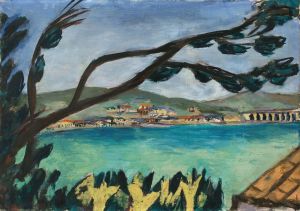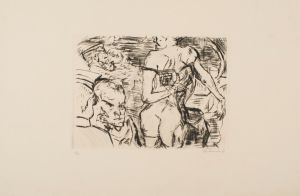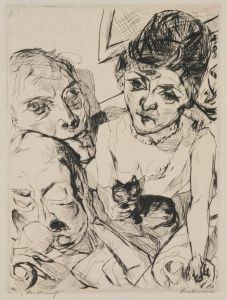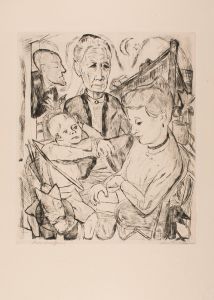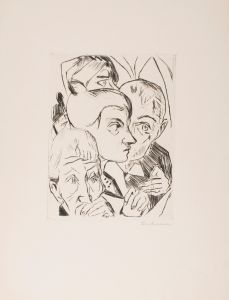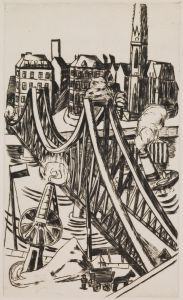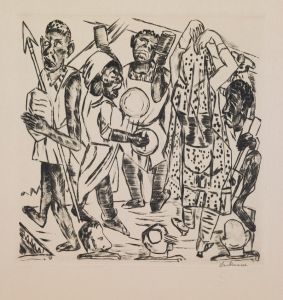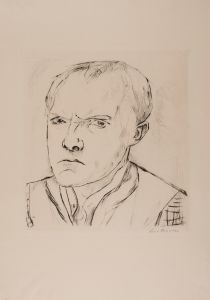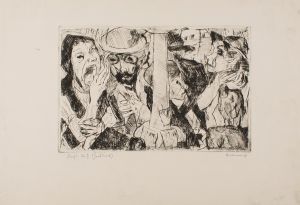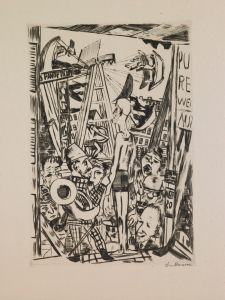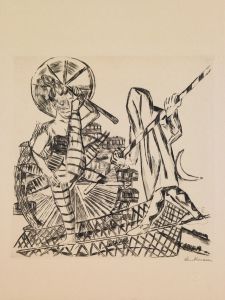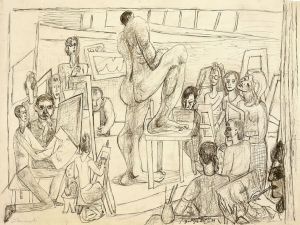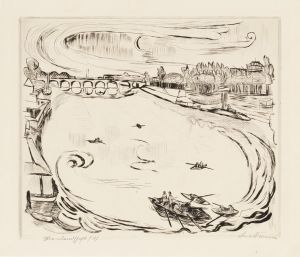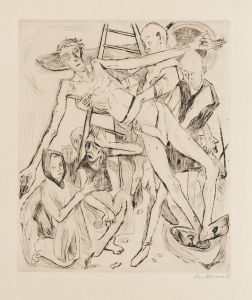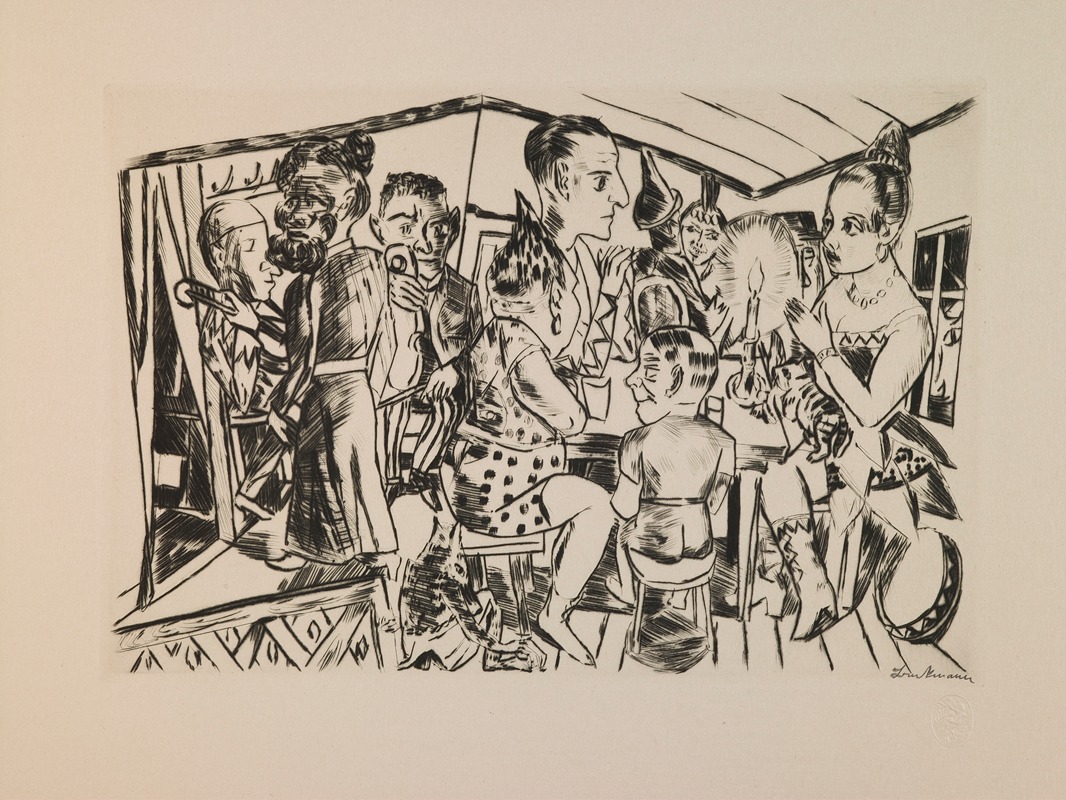
Behind the Scenes, plate 3 from the portfolio ‘Annual Fair’
A hand-painted replica of Max Beckmann’s masterpiece Behind the Scenes, plate 3 from the portfolio ‘Annual Fair’, meticulously crafted by professional artists to capture the true essence of the original. Each piece is created with museum-quality canvas and rare mineral pigments, carefully painted by experienced artists with delicate brushstrokes and rich, layered colors to perfectly recreate the texture of the original artwork. Unlike machine-printed reproductions, this hand-painted version brings the painting to life, infused with the artist’s emotions and skill in every stroke. Whether for personal collection or home decoration, it instantly elevates the artistic atmosphere of any space.
Max Beckmann's Behind the Scenes, plate 3 from the portfolio ‘Annual Fair’ is a notable work created in 1921. This piece is part of a larger portfolio titled Jahrmarkt (translated as Annual Fair), which consists of ten lithographs. The portfolio reflects Beckmann's fascination with the carnival and circus as metaphors for the complexities of human existence. These themes were central to his work during the post-World War I period, a time marked by social upheaval and personal introspection.
The lithograph Behind the Scenes provides a glimpse into the backstage world of performers, capturing an intimate and somewhat enigmatic moment. The composition features a group of figures in a confined space, suggesting the hidden, chaotic, and often unglamorous reality behind the spectacle of performance. Beckmann's use of bold, angular lines and stark contrasts is characteristic of his graphic work, emphasizing the emotional intensity and psychological depth of the scene.
Beckmann created the Jahrmarkt portfolio during a period of significant artistic and personal transformation. Having served as a medical orderly during World War I, he experienced the trauma of the war firsthand, which profoundly influenced his artistic vision. After the war, Beckmann moved away from the more traditional styles of his earlier work and embraced a more expressionistic approach. The Jahrmarkt series exemplifies this shift, showcasing his interest in exploring existential themes through symbolic and often unsettling imagery.
The carnival setting in Behind the Scenes and the other works in the portfolio serves as a microcosm of society, where the boundaries between reality and illusion blur. Beckmann was drawn to the carnival as a space where human behavior could be observed in its rawest form, free from societal constraints. The performers, with their exaggerated costumes and personas, become symbols of the human condition, embodying both the grotesque and the sublime.
The Jahrmarkt portfolio was published by Verlag R. Piper & Co. in Munich in 1921, and it remains one of Beckmann's most celebrated graphic series. The works were created using the lithographic technique, which allowed Beckmann to achieve a high level of detail and tonal variation. Today, individual prints from the portfolio, including Behind the Scenes, are held in major museum collections around the world, reflecting their enduring significance in the history of modern art.
Max Beckmann (1884–1950) is widely regarded as one of the most important German artists of the 20th century. His work spans painting, printmaking, and drawing, and he is often associated with the New Objectivity movement, although his style defies strict categorization. Behind the Scenes exemplifies his ability to merge personal experience with universal themes, creating works that continue to resonate with audiences today.





